AFRL’s newest supercomputer ‘Raider’ promises to compute years’ worth of data in days
WRIGHT-PATTERSON AIR FORCE BASE, Ohio (AFRL) – The Air Force Research Laboratory, or AFRL, is now home to its newest supercomputer, named the Raider. The FY21 technology insertion, or TI-21, system is part of the DOD High Performance Computing Modernization Program. While Raider is housed at Wright-Patterson Air Force Base, Ohio, it also serves as a national resource as the Air Force, Army and Navy each have access to Raider’s supercomputing capabilities.
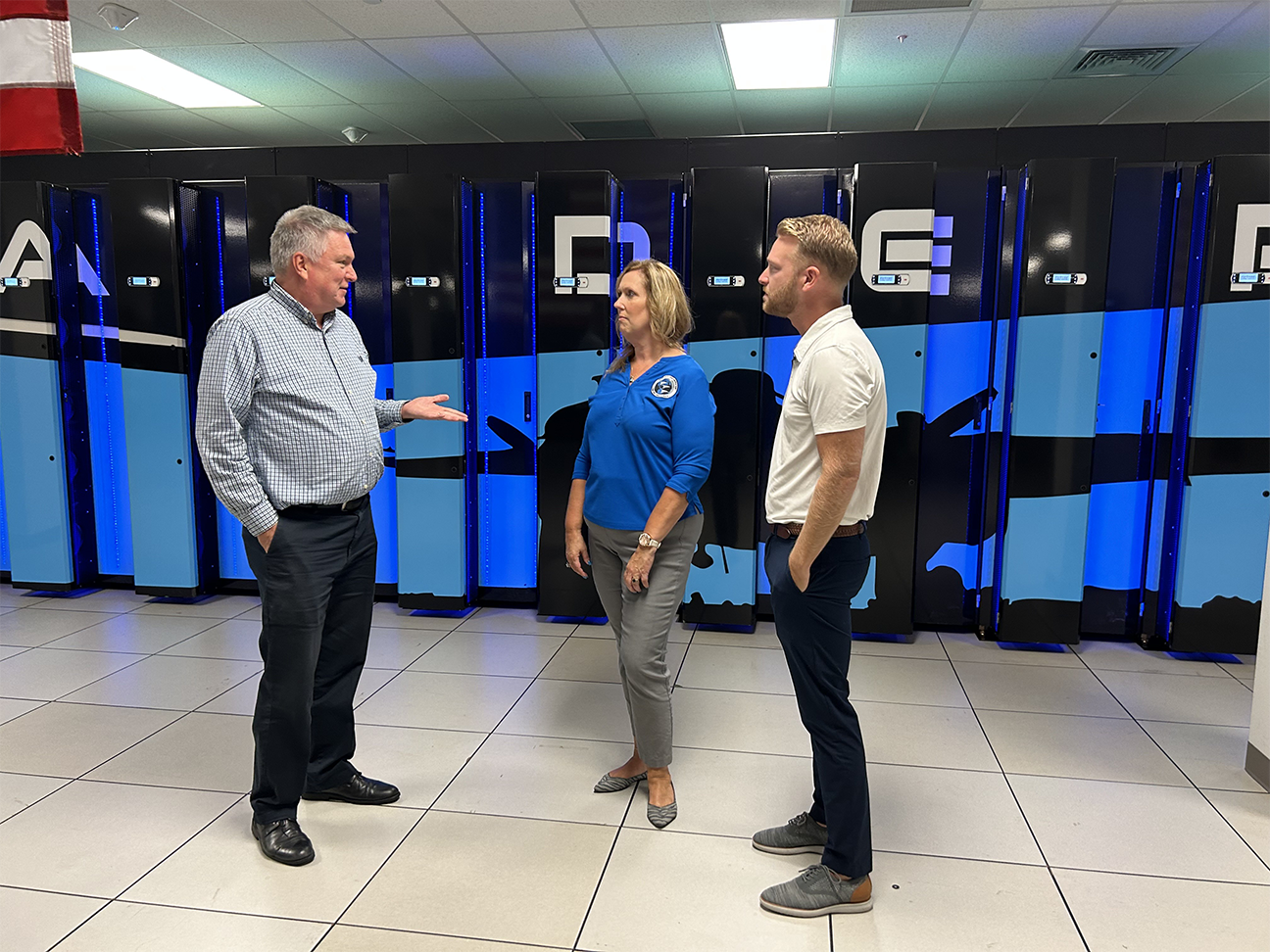
From left: Brian Schafer, deputy division chief; Heather Christoff, chief, Customer Success; and Brad Hackworth, acquisition program manager, Digital Capabilities Directorate, Air Force Research Laboratory, or AFRL, discuss the Raider, the directorate’s newest supercomputer at Wright-Patterson Air Force Base, Ohio, Aug. 29, 2023. The Raider, also known as a technology insertion, or TI-21, system is part of the DOD High-Performance Computing Modernization Program. The system is housed at Wright-Patterson Air Force Base but also serves as a nationwide resource for members of the U.S. Air Force, Army and Navy. Recently, the Digital Capabilities Directorate placed an order for the next supercomputer, which will be delivered in 2024. The next two systems to be installed are the TI-23 Flyer and TI-23 Raven will operate as unclassified and classified systems, respectively. (U.S. Air Force photo / Aleah M. Castrejon)
The TI-21 system, named in honor of the Doolittle Raiders, can calculate about 12 petaFLOPS, or floating-point operations, per second. In comparison, the previous supercomputer, Thunder, installed in 2015, calculated only 3.1 petaFLOPS, or 3,126,240,000,000,000 floating point operations, per second.
More recently, the Digital Capabilities Directorate placed an order for the next supercomputer, which will be delivered in 2024. The next two systems to be installed are the TI-23 Flyer and TI-23 Raven, which are expected to calculate 14 petaFLOPS of computational capability. The Flyer and Raven will support the unclassified and classified systems, respectively.
“A petaFLOP is a measure used for performance on how fast the machine can actually perform floating point operations,” said Kelly Dalton, technical director at AFRL’s DOD Supercomputer Resource Center, or DSRC.
Essentially, a petaFLOP is the speed at which the computer can turn projects. For those in the science and technology, test and evaluation and acquisition engineering communities, this resource is extremely beneficial.
For example, Dalton said, imagine facing the reality that it could take up to five years to complete simulations and run data on a standard computer. The Raider has the potential to take take that five-year project timeline and turn it into about 200 days, according to Dalton. “And if you’re working on a very hot research or acquisition program, that’s a big return on investment,” Dalton said. “Time is money in this world.”
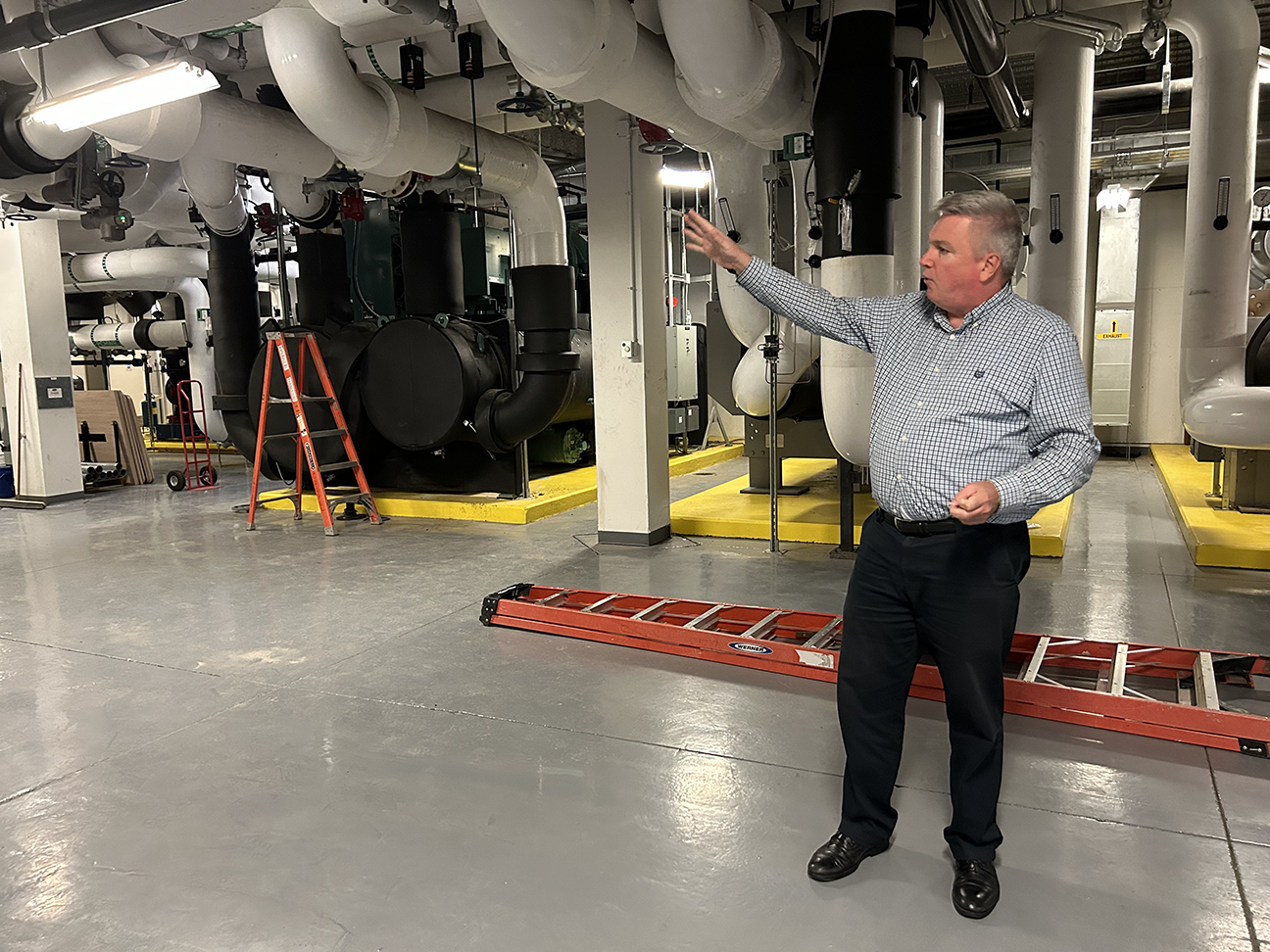
Brian Schafer, deputy division chief, Digital Capabilities Directorate, Air Force Research Laboratory, or AFRL, discusses water-cooling system logistics for the Raider, the directorate’s newest supercomputer housed at Wright-Patterson Air Force Base, Ohio, Aug. 29, 2023. The Raider, also known as a technology insertion, or TI-21, system is part of the DOD High Performance Computing Modernization Program. The supercomputer system is a national resource to which the U.S. Air Force, Army and Navy each have access. Recently, AFRL’s Digital Capabilities Directorate placed an order for the next supercomputer, which will be delivered in 2024. The next two systems to be installed are the TI-23 Flyer and TI-23 Raven will operate as unclassified and classified systems, respectively. (U.S. Air Force photo / Aleah M. Castrejon)
Once the supercomputer is in place, it is on and running 24/7, 365 days a year for up to five to seven years, said Bryon Foster, division chief, AFRL’s Digital Capabilities Directorate.
Once installed and ready for use, another supercomputer is ordered, ensuring a replacement is always ready to take over, Foster added.
“These systems are so large, and it takes so much to build them, get them in the building and up and running that there is a continual process,” Foster added. “Sometimes even before the system is running, we’re ordering the next one.”
The purpose of this continual process is to provide AFRL and the DOD with the latest technology, Dalton said.
“We’re trying to position AFRL as the leader in high performance computing, supercomputing for the Air Force, and also for the DOD,” Dalton said. “That’s why it’s important for the community.”
Dalton also added that these machines put the DoD in a prominent position to support U.S. technological advantage over potential adversaries.
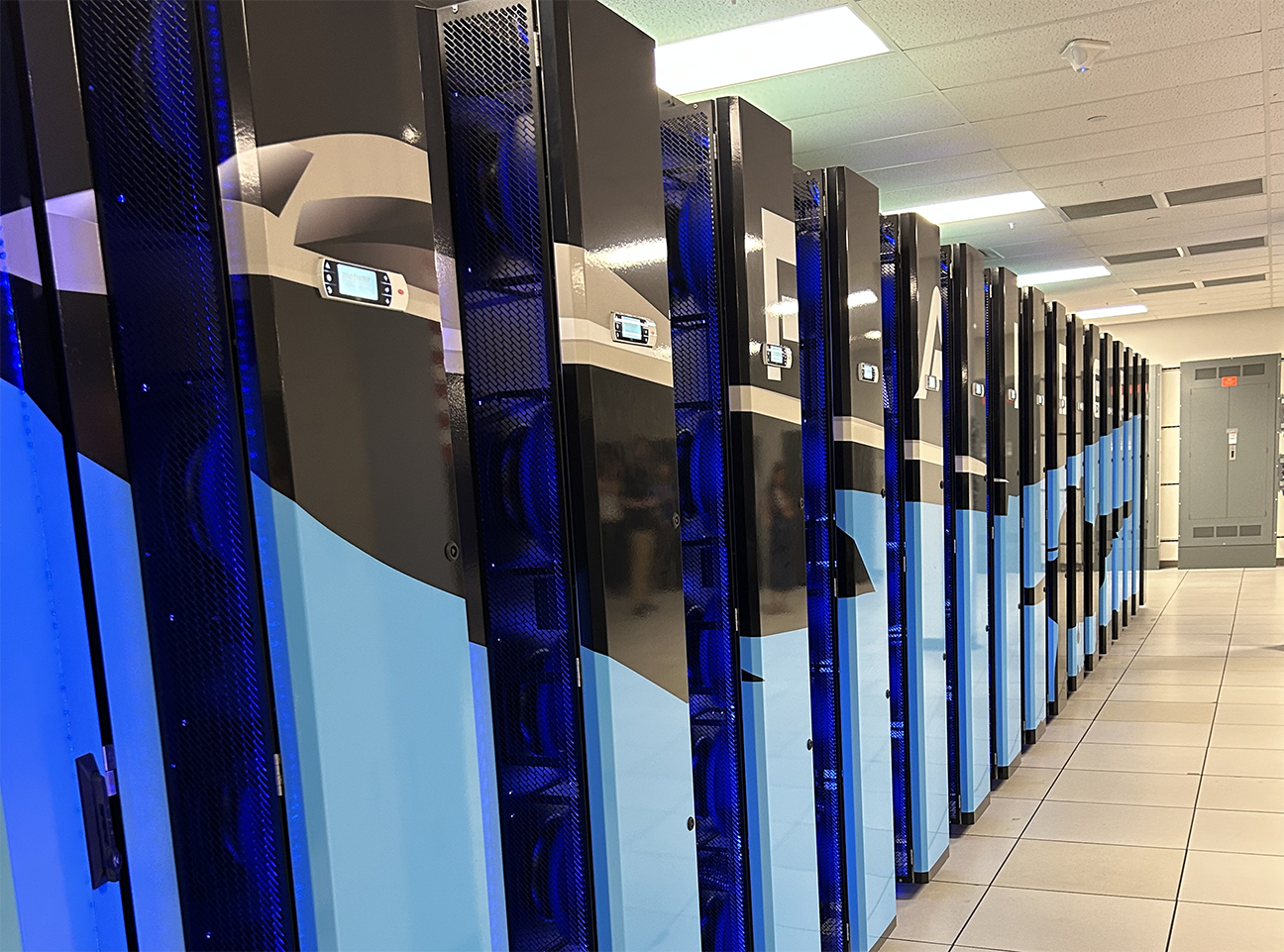
The Raider supercomputer, or FY21 technology insertion, or TI-21, system is part of the DOD High Performance Computing Modernization Program and is housed at Wright-Patterson Air Force Base, Ohio. The supercomputer is a national resource with the Air Force, Army and Navy as its biggest customers. Recently, the Air Force Research Laboratory’s Digital Capabilities Directorate placed an order for the next supercomputer, which will be delivered in 2024. The next two systems to be installed are the TI-23 Flyer and TI-23 Raven will operate as unclassified and classified systems, respectively. (U.S. Air Force photo / Aleah M. Castrejon)
Digital transformation
“The fuel of our digital transformation is our compute capacity,” said AFRL Chief Information Officer and Digital Capabilities Directorate director Alexis Bonnell. “Not every mission of AFRL, the Air Force, Space Force or DOD is appropriate for cloud. Outpacing the adversary often means out-racing them, ensuring our data can move faster, be analyzed more rapidly and gain insight driven advantage to keep the fight unfair.”
Speed and modeling, Foster said, is a large part of the outcome.
“What we’re trying to do with the digital transformation is take some of these workloads that were done in testing … We’re now able to simulate, in which case we can do the testing cheaper, faster,” Foster added. “In some ways, we can do things in simulations that you could never do in a physical testing environment.”
One example is hypersonic vehicles that travel too fast to test on a range.
“You can model a simulation on a supercomputer and get an idea of how the performance is going to be without actually flying it,” Dalton said.
Dalton made it clear that simulations do not replace experimentation and testing, but rather augment them with modeling capabilities.
Looking at different technology areas, the supercomputer can be beneficial. Foster said AI models can be fed more data and thus run more simulations and tests.
Accelerate
The DOD has five DSRCs, and Wright-Patterson Air Force Base is the largest Air Force DSRC, according to Foster. Because it is a DOD resource, contractors, civilians, military and other organizations with a DOD sponsor all have access to the supercomputer.
“The big thing we use these systems to do is modeling and simulation,” Foster said. “We’re trying to drive shorter timelines and accelerate — we can do higher fidelity in terms of calculations.”
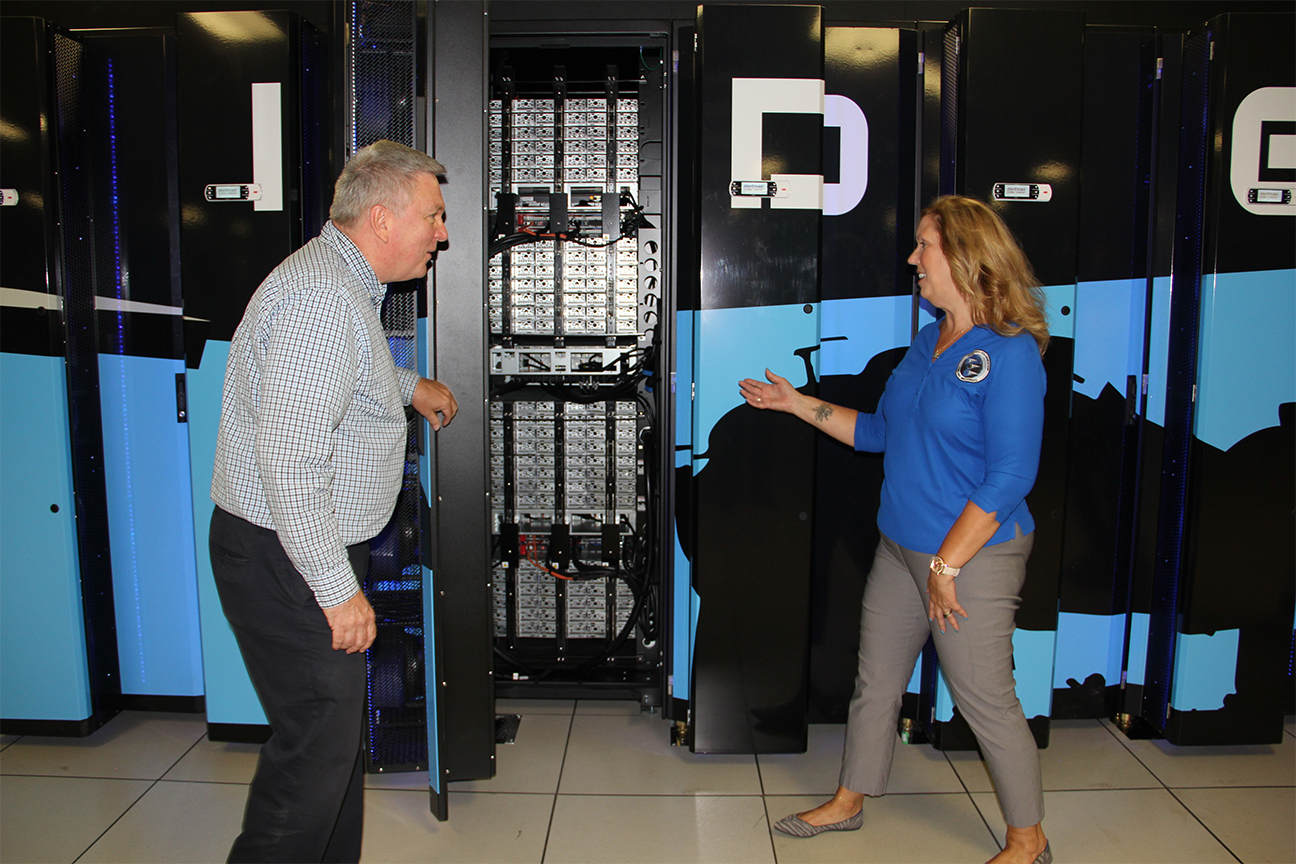
Brian Schafer, left, deputy division chief, Digital Capabilities Directorate, Air Force Research Laboratory, or AFRL; and Heather Christoff, chief, Customer Success, Digital Capabilities Directorate, AFRL, open a panel of the Raider supercomputer, or technology insertion, or TI-21, system which is part of the DOD High Performance Computing Modernization Program and housed at Wright-Patterson Air Force Base, Ohio, Aug. 29, 2023. The supercomputer is a national resource with the Air Force, Army and Navy as its biggest customers. Recently, the Air Force Research Laboratory’s Digital Capabilities Directorate placed an order for the next supercomputer, which will be delivered in 2024. The next two systems to be installed are the TI-23 Flyer and TI-23 Raven will operate as unclassified and classified systems, respectively. (U.S. Air Force photo / Aleah M. Castrejon)
Foster explained that the modeling and simulations resulted in a higher level of accuracy. For example, the Navy previously ran simulations at lower levels of accuracy with the hardware they had access to, however, the Raider was able to take the same project from 6 months to 3 weeks.
Dalton expressed the importance of accelerating and providing the best equipment to researchers and engineers to help produce the best equipment for the warfighter.
“We’re trying to help the scientists and engineers do the work faster and with higher fidelity so they can produce superior capabilities for the warfighter,” Dalton said. “In terms of AFRL, we are trying to advance the research being done here.”
With modeling and simulation, the DOD can save years’ worth of time and money in its laboratories, as the supercomputer allows researchers to model different effects before diving into experiments and testing, Dalton added.
Power
“Our ability to apply this compute in-house, on secure networks, with the scale that the biggest and most challenging questions deserve, is why our high-performance computing is a foundational capacity,” Bonnell said.
The average computer can hold about 16-128 processors or computing cores: in comparison, the inside of the Raider houses 189,000.
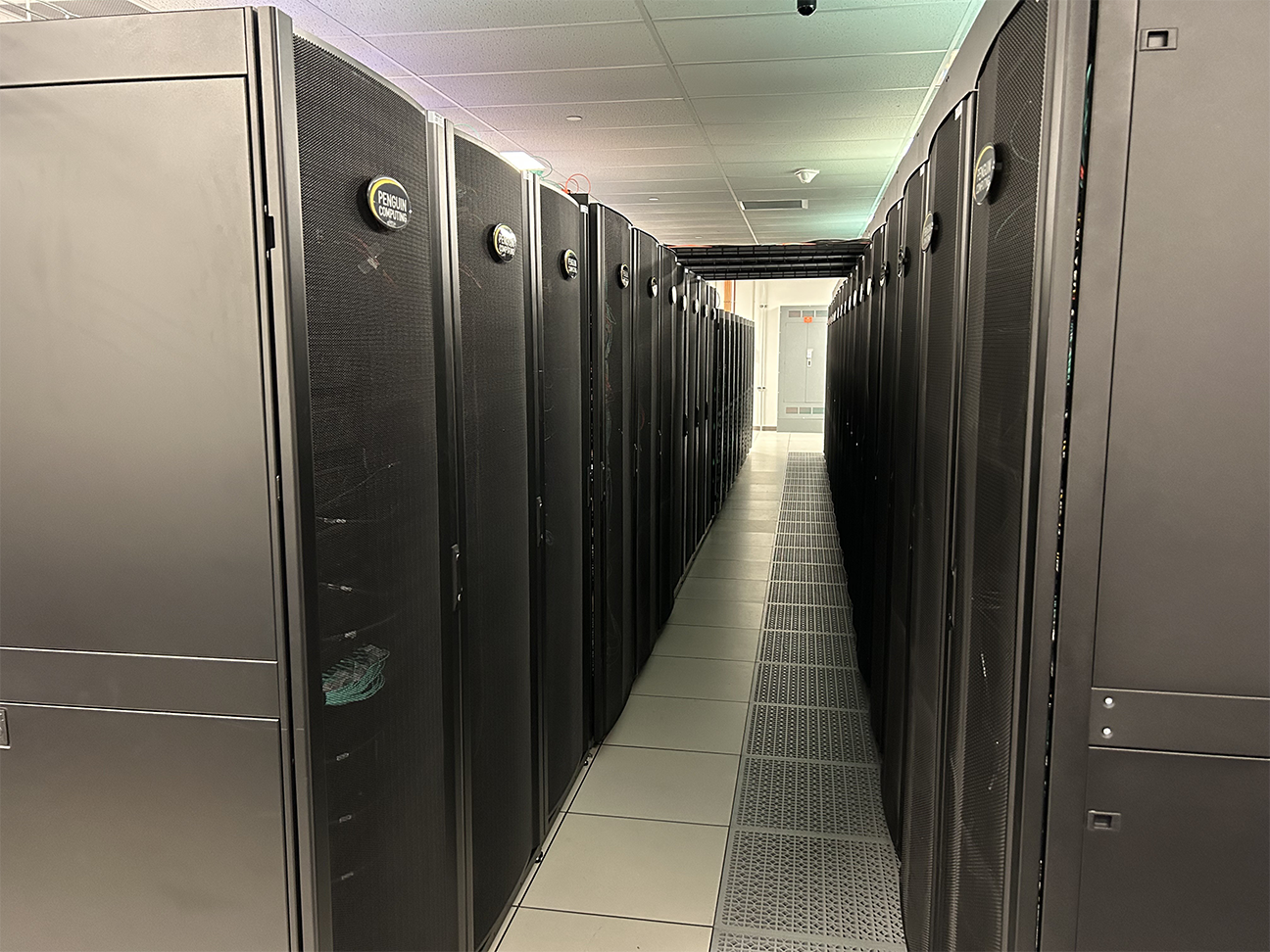
The Raider supercomputer, or FY21 technology insertion, or TI-21, system is part of the DOD High Performance Computing Modernization Program and is housed at Wright-Patterson Air Force Base, Ohio. The supercomputer is a national resource with the Air Force, Army and Navy as its biggest customers. Recently, the Air Force Research Laboratory’s Digital Capabilities Directorate placed an order for the next supercomputer, which will be delivered in 2024. The next two systems to be installed are the TI-23 Flyer and TI-23 Raven will operate as unclassified and classified systems, respectively. (U.S. Air Force photo / Aleah M. Castrejon)
Foster explained that an average computer is limited in terms of the models it can run and how much processing the systems can enable, but the supercomputer uses all 189,000 processors to work together.
“If you start looking at just the scales, that’s staggering,” Foster said. “If you look at your storage on your hard drive, you’d have maybe a terabyte, we’re talking petabytes on these systems.”
With this amount of storage, Foster said the users can pull in data much faster than has been seen before using an average computer.
In terms of enabling AFRL’s scientists and engineers to do their work, Dalton said the investment helps AFRL remain competitive in the digital world.
“This is a tremendous resource that’s out there for them to use anytime,” Dalton said.
About AFRL
The Air Force Research Laboratory, or AFRL, is the primary scientific research and development center for the Department of the Air Force. AFRL plays an integral role in leading the discovery, development and integration of affordable warfighting technologies for our air, space and cyberspace force. With a workforce of more than 12,500 across nine technology areas and 40 other operations across the globe, AFRL provides a diverse portfolio of science and technology ranging from fundamental to advanced research and technology development. For more information, visit www.afresearchlab.com.
